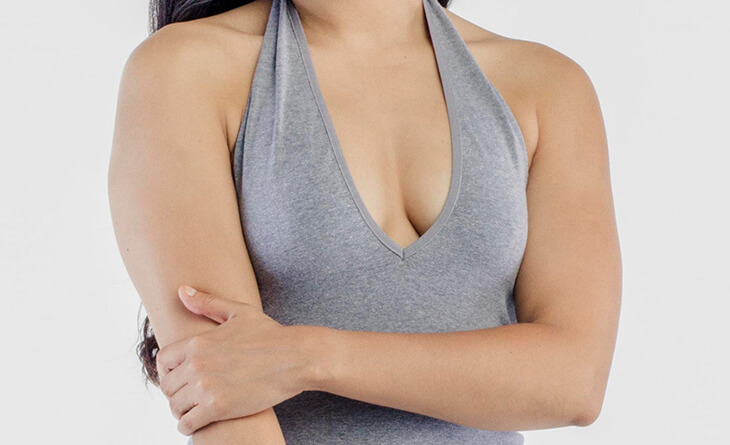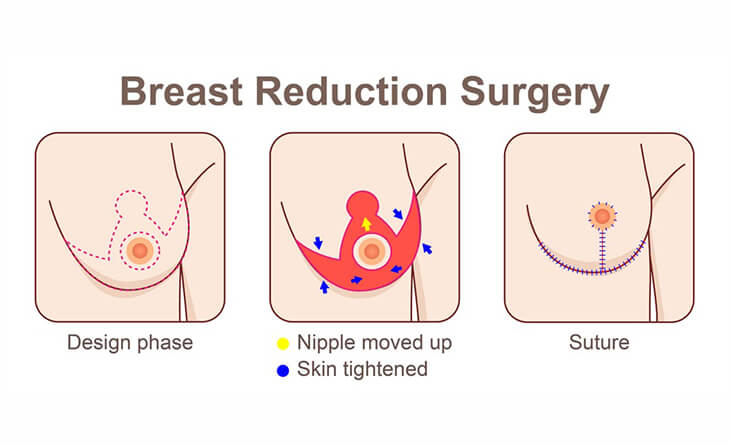Well-formed, proportioned firm breasts can enhance a woman’s beauty and boost her self-confidence. Significantly enlarged breasts can however be a source of distress. Women with very large breasts suffer from various physical ailments such as neck or back pain, sleep disturbances and skin rashes. Their clothing options are limited and the enlarged breasts pose a hindrance for various physical and sports activities. In addition, they also suffer socially as they are at the receiving end of unwanted stares and comments. All these factors can cause severe emotional and mental stress leading to a depressed or withdrawn personality. In some cases, the breasts may be so heavy that the shoulder straps of their bra cause chafing, indentations and even wounds on the shoulder. Breast reduction surgery can permanently solve all these issues and gratifyingly restore the aesthetic shape and size of a woman’s breasts.

Am I a good candidate for breast reduction surgery?
You may be a good candidate for breast reduction surgery if you have:
- Breasts that are too large to your body frame
- Heavy sagging breasts with very low nipples
- Restriction of physical activity due to size and weight of your breasts
- Back, neck, shoulder pain and chafing due to the weight of your breasts
- Skin irritation and rashes beneath your breasts
- Psychological distress due to the large size of your breasts
- One breast is much larger than the other
What are the important things to do before breast reduction surgery?
The most important thing about planning your Breast Reduction surgery is to choose the correct qualified Aesthetic plastic surgeon. More specifically, ensure that the chosen surgeon is routinely performing Breast Reduction surgeries.
You must STOP the following medications approximately 2 weeks before surgery – blood thinners such as ecosprin, clopidogrel, warfarin etc, estrogen containing hormones, Vitamin E, ginseng, green tea, gingko balboa, garlic pearls, ayurvedic supplements. It is imperative that you completely stop smoking for a minimum of 1 week prior to your planned date of surgery as it can significantly increase your risk for anaesthesia as well as delay wound healing and increase your risk for post-surgery complications.
You will be advised a set of routine pre-operative investigations to ensure that you are fit for anaesthesia and surgery. A mammogram is also advisable prior to surgery to rule out any existing lumps or lesions in the breast. If you have a personal or family history of breast cancer, then a detailed baseline mammogram is mandatory to ensure absence of any existing lesion.
Surgery options
There are broadly 2 options for reducing enlarged breasts.
- Liposuction – This sucks out the excess fatty tissue in the breast resulting in size reduction. It does not reduce the glandular tissue. When breast skin tone or elasticity is poor, it may result in exaggerated sagging of breasts.
- Surgical breast reduction – This procedure has two varieties depending on the shape of the final scar:
a) Inverted T scar: this is an older technique which is now less popular amongst breast surgeons due to the more extensive scars and less than optimum breast shape. This technique may still be useful in patients with extremely large breasts with severe sagging.
b) Vertical or Lollipop scar – this is the gold standard for breast reduction today. This is associated with less extensive scars and better / more durable breast contours.

What to expect during recovery?
You will be advised to stay admitted in the hospital for 24-48 hours after the surgery. Surgical drain tubes inserted to prevent any fluid collection are generally removed 24-48 hours after the surgery and the patient discharged
Breast reduction surgery is NOT associated with significant pain and most patients are comfortable immediately after surgery. In fact it is possible that the breast sensations will be reduced after surgery and will gradually return in a few months. Moderately potent painkillers are enough to keep the patient comfortable. You will be comfortable enough to walk around by the same evening. You will be advised to wear a well-fitting elastic bra whenever you are upright and walking for at least 4-6 weeks after surgery.
Dressings are usually done every 4th/5th day for 2 weeks. You can have a full body bath only after the dressings are stopped.
You can resume non-strenuous activities by 5-7 days after surgery. You may resume your routine work by 10 to 14 days after surgery. However, you may start bending, lifting hands above your head and exercises only 4 weeks after surgery.
The scars will be firm and pink for at least 6 weeks, after which they generally begin to fade. The scars will however take 3-6 months to settle. By 2-3 months after surgery, you can expect to see the final shape, size and feel of your reduced breasts.
What can go wrong?
As with any surgical procedure, breast reduction may be associated with various possible complications or unwanted effects. These may be as follows:
- Early Swelling, bruising and discomfort is expected.
- Some patients may develop a small collection of fluid (seroma) or blood clots (hematoma) in the breasts after surgery. These usually settle on their own. Rarely a needle aspiration may be necessary
- Wound breakdowns – This risk is greater in chronic smokers, diabetics, and with patients with very large breasts. In most of such cases, with a more prolonged period of dressings, the wound heals on its own. Rarely, the wound may need to be stitched up again to expedite the healing process.
- Reduced nipple sensation – happens in a few patients and recovers over 6 months to a year after surgery.
- Asymmetry – Minor differences in breast size are normal. Major asymmetry after surgery is very rare.
- Scar related problems – sometimes bunched up skin at the lower end of the incision pouts out (Dog-ear) and may require a minor procedure to remove it. In some cases, the scars may darken, thicken or stretch. Your surgeon will advise you appropriate creams or gels for such scars.
